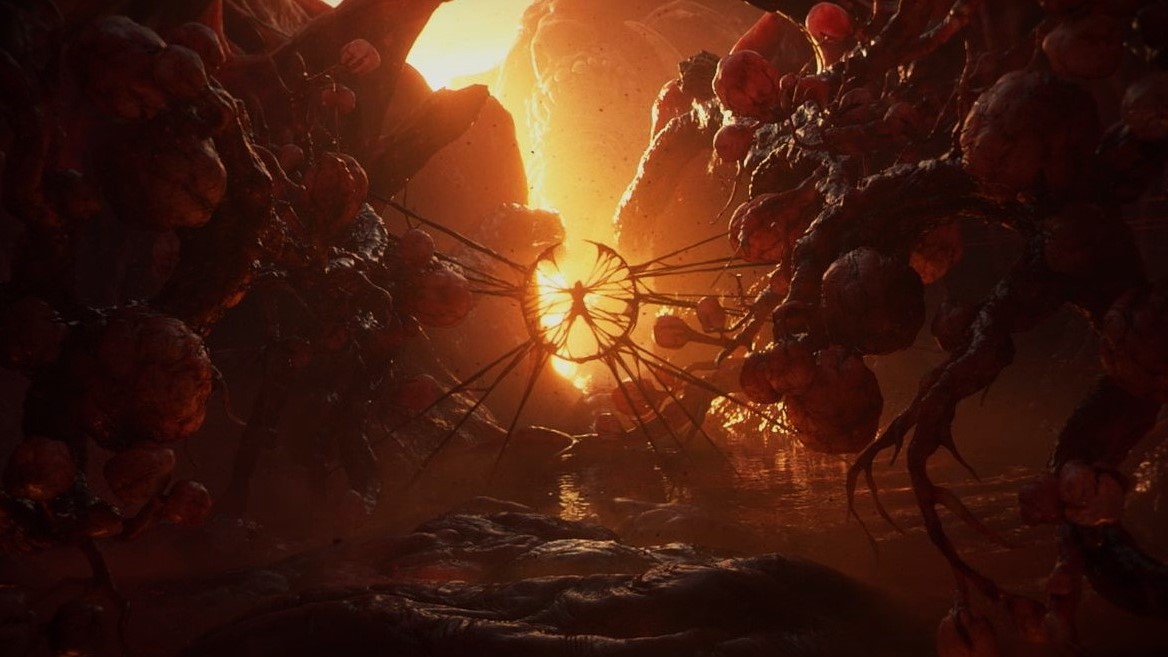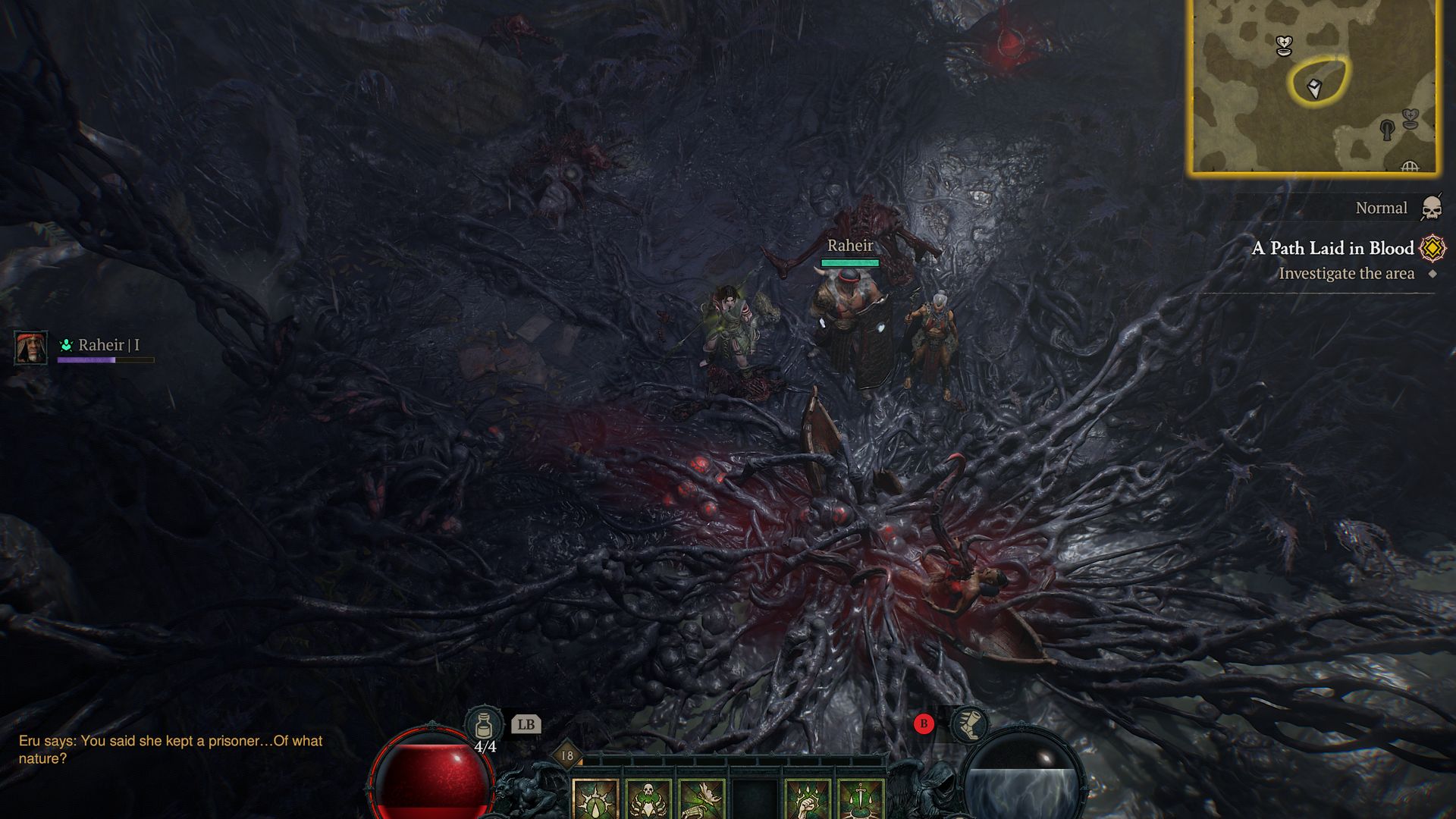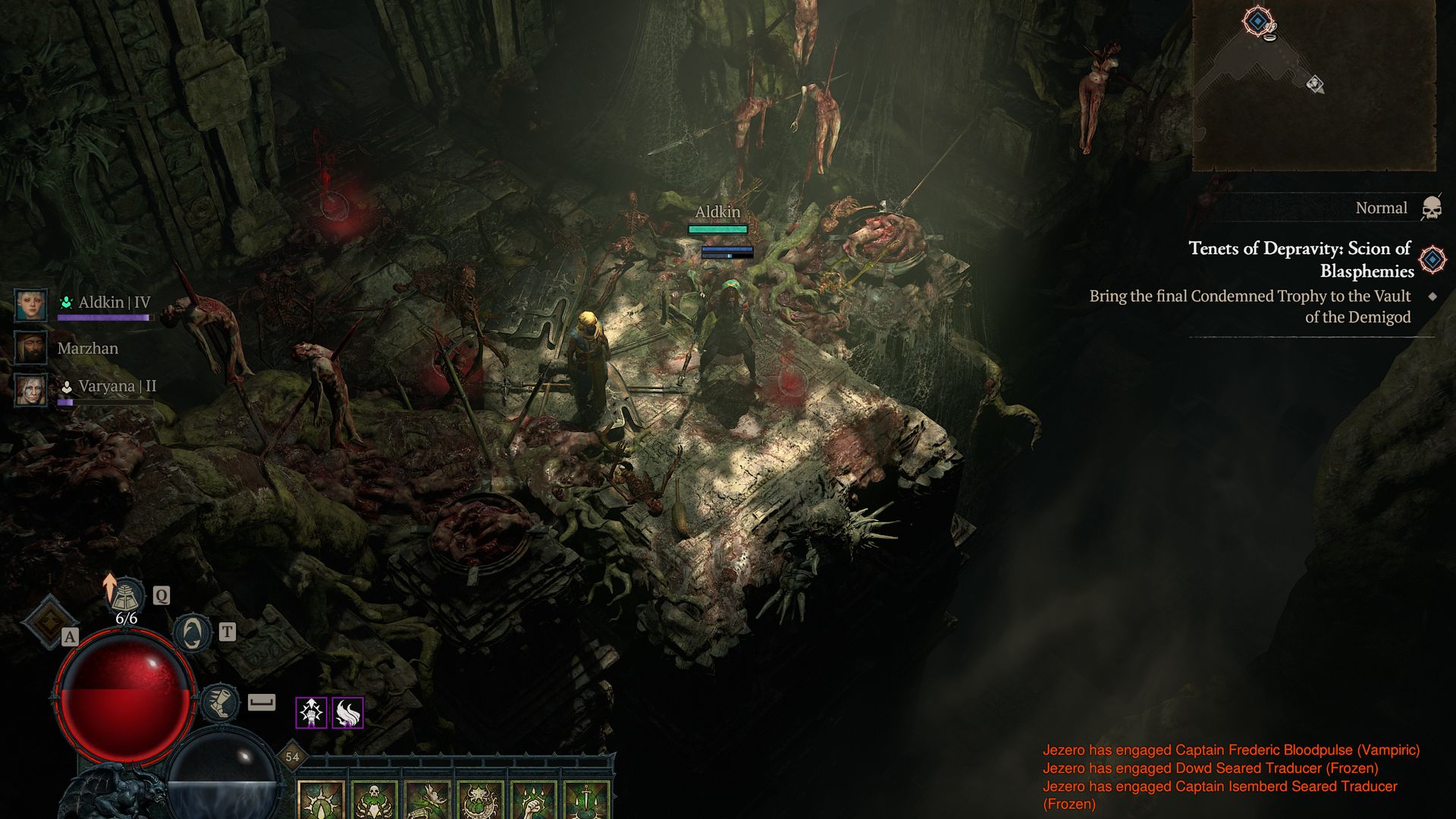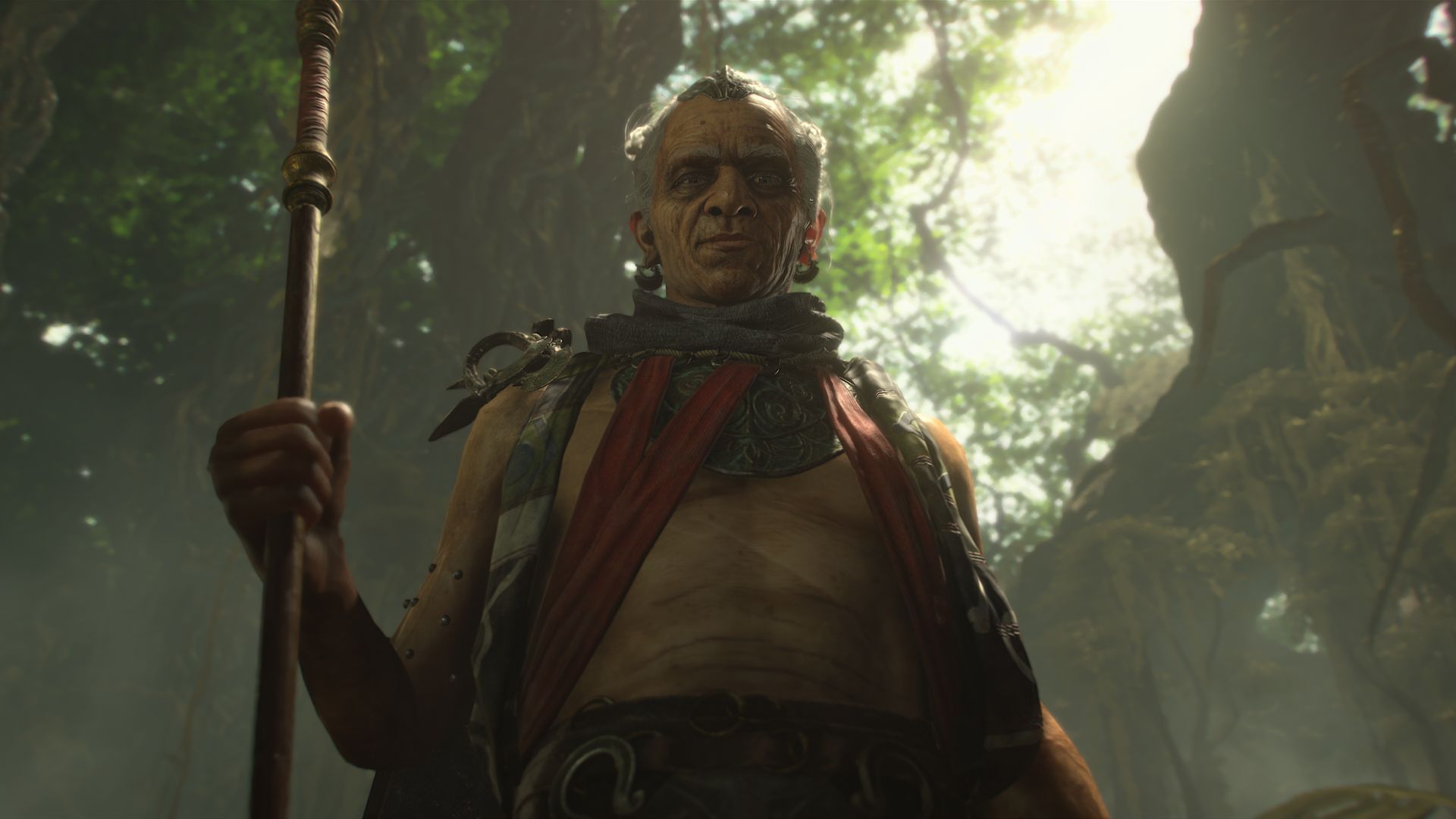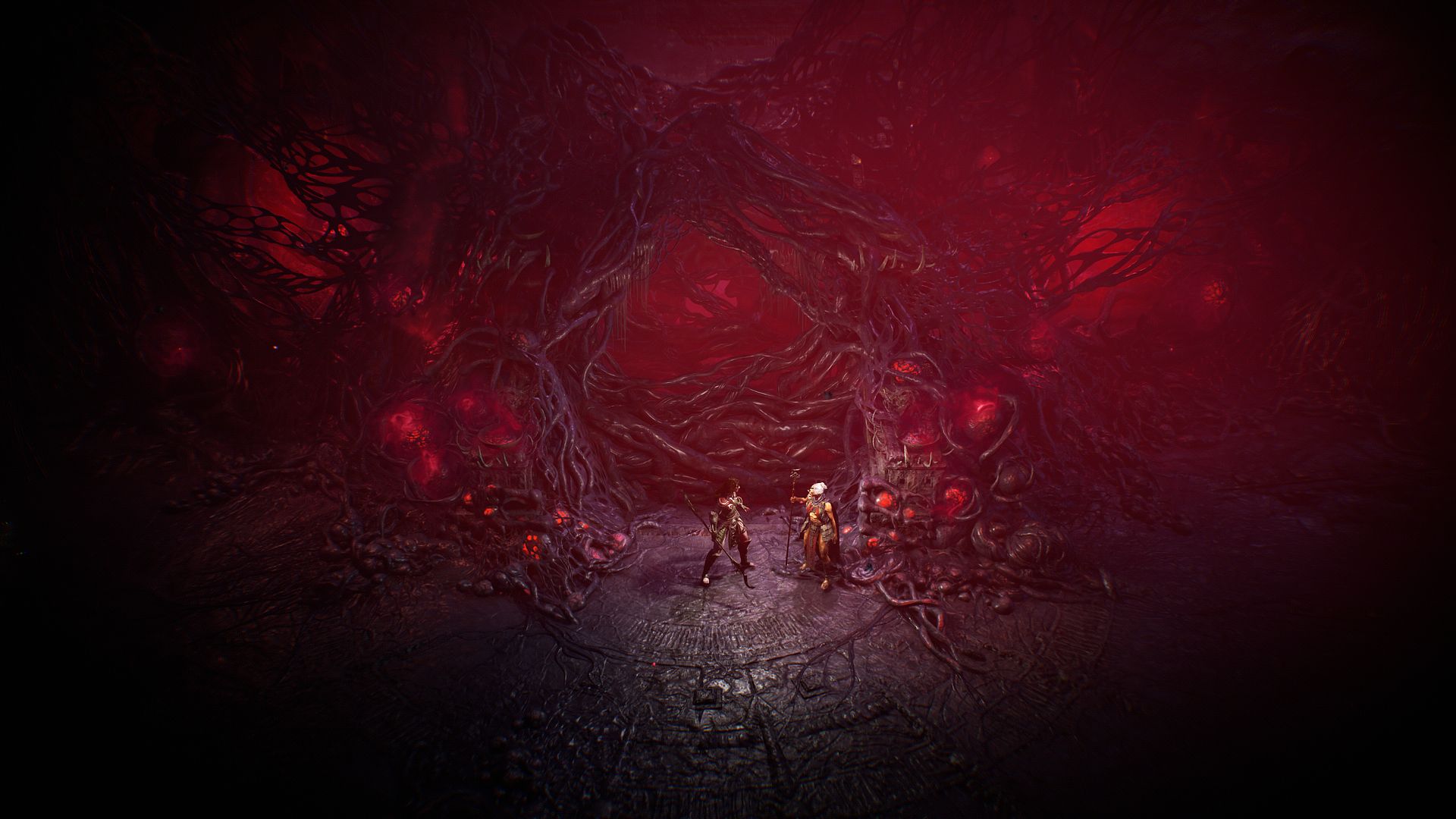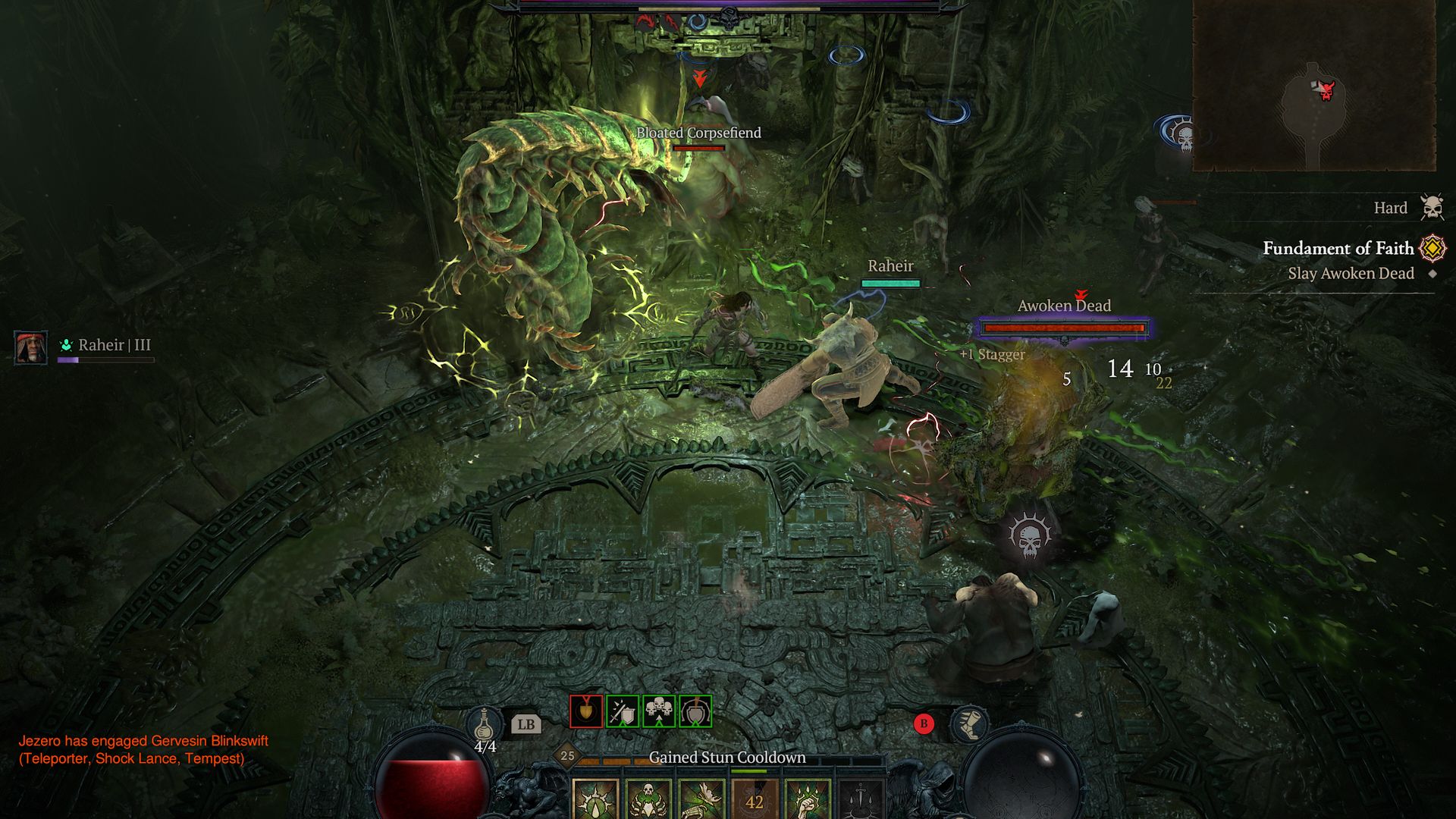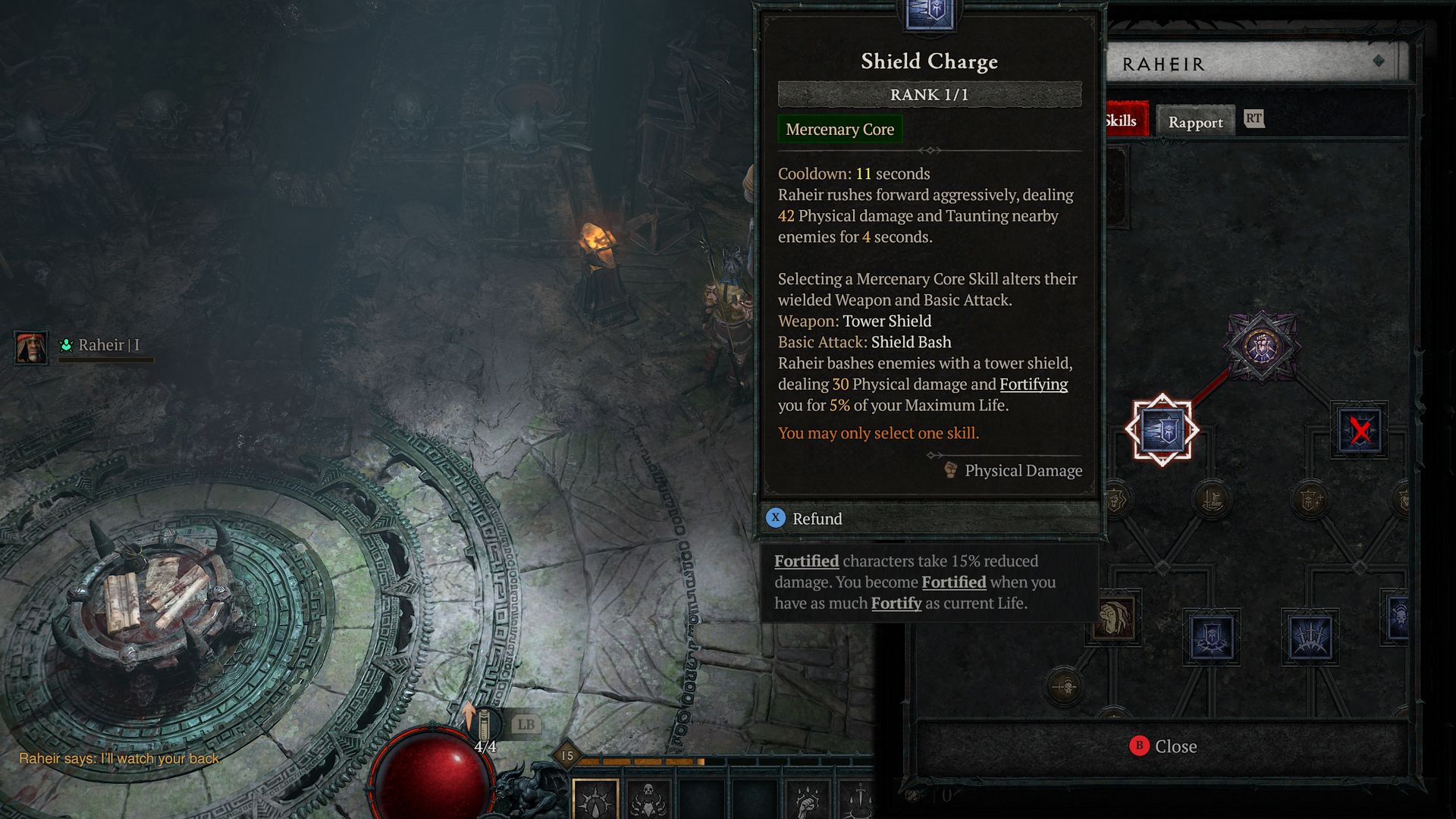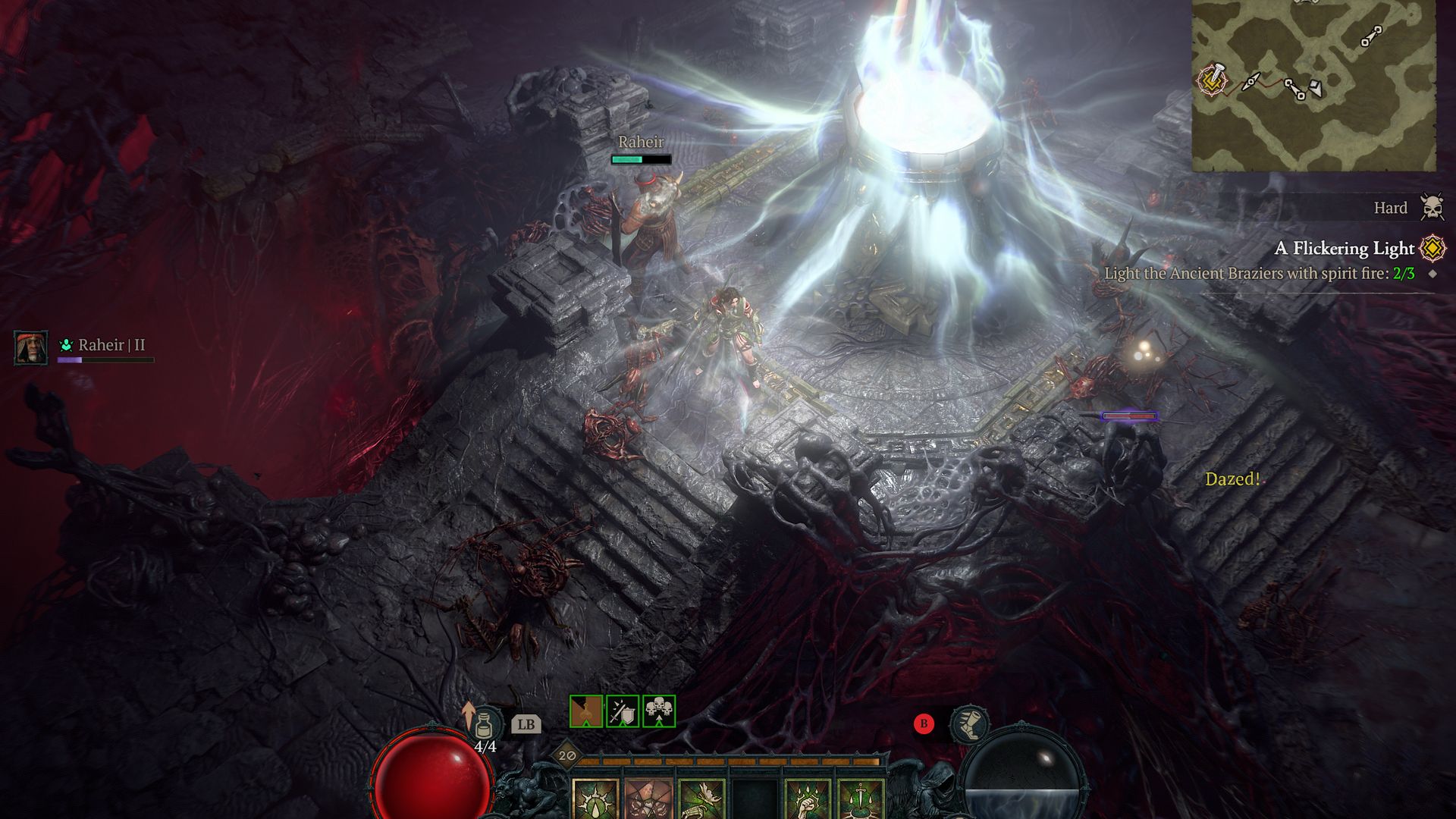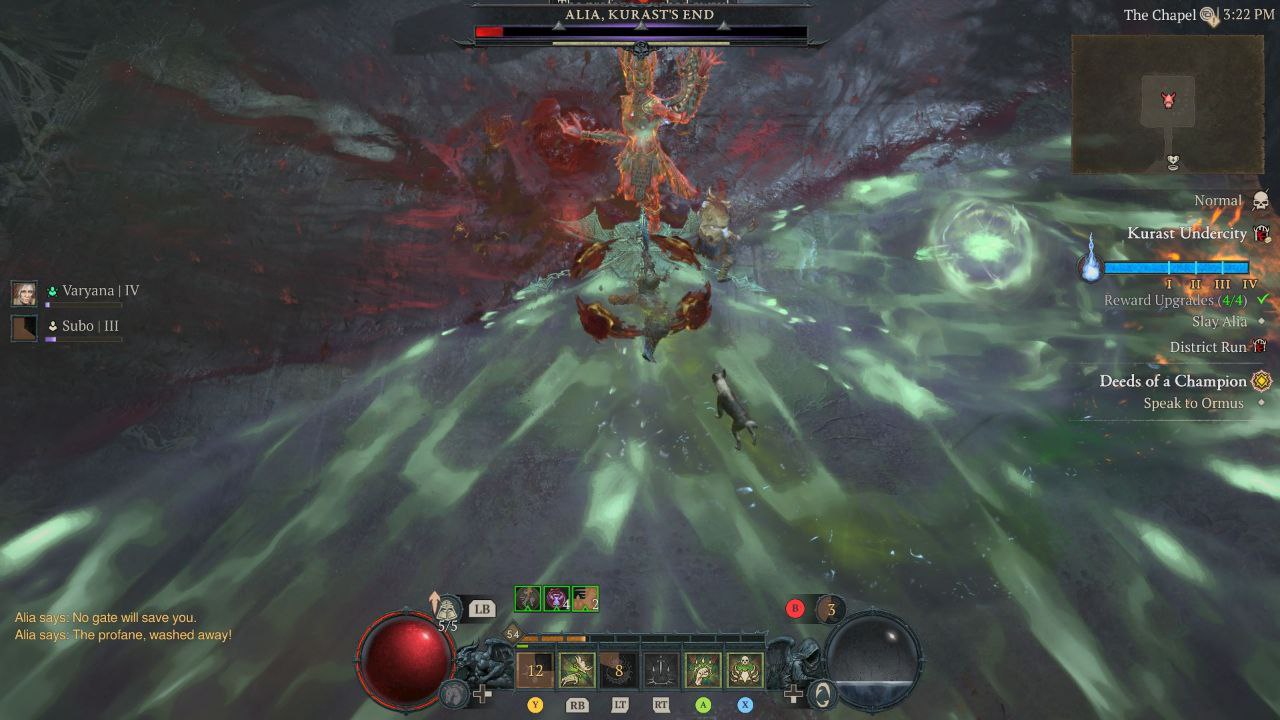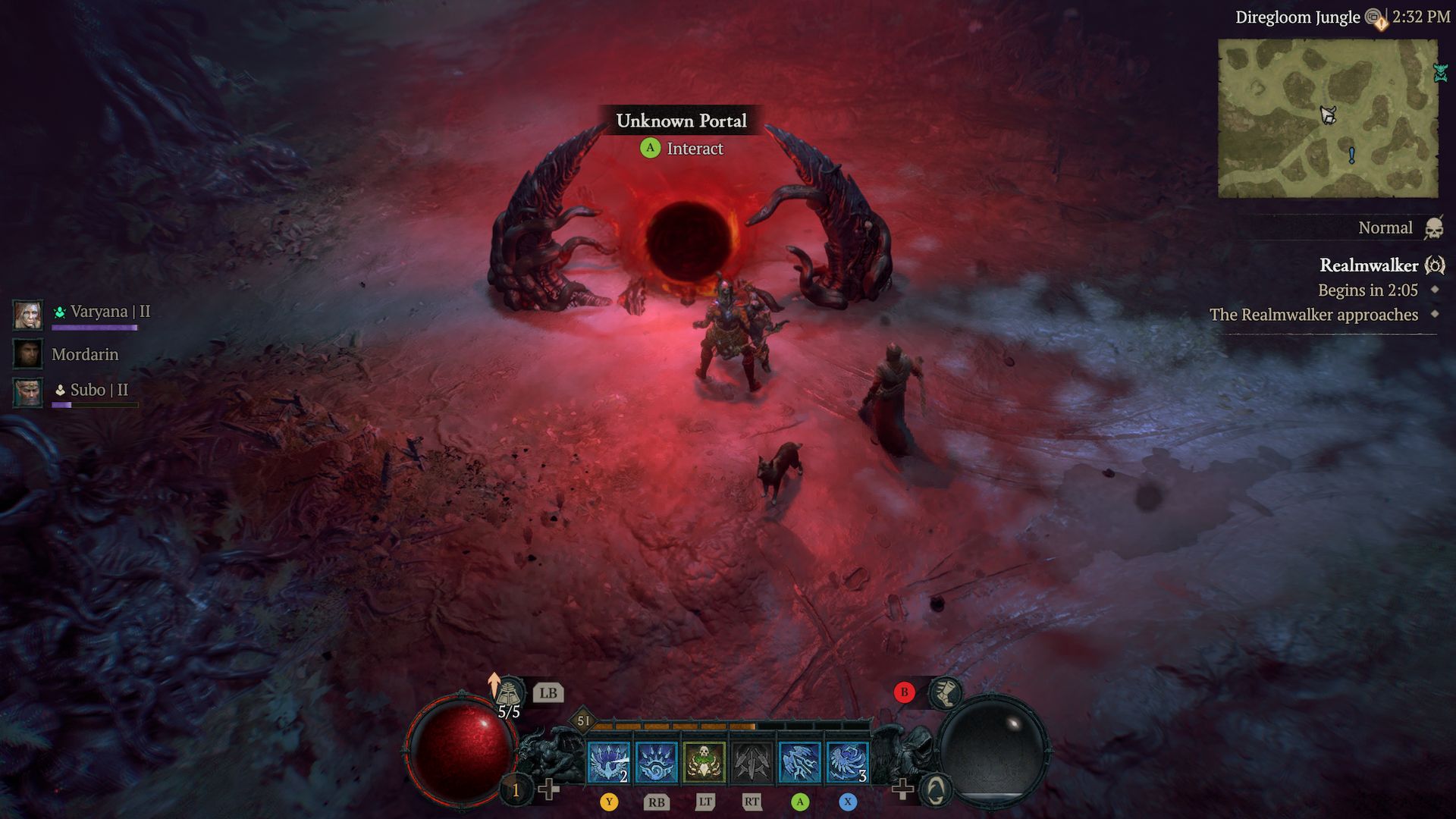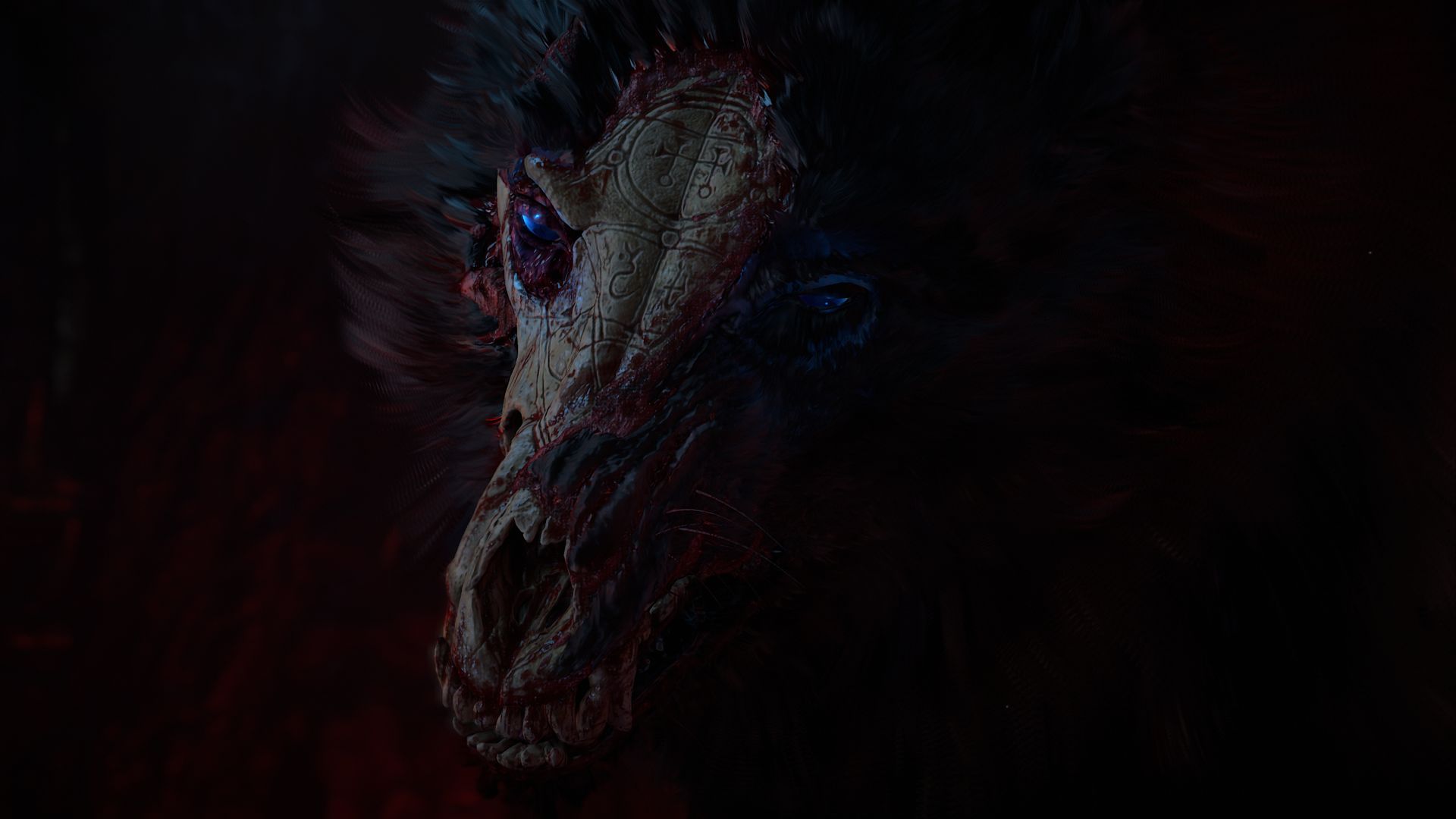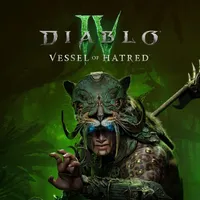Windows Central Verdict
There has been a range of mixed feelings about what Blizzard has put on offer with Vessel of Hatred. Just as the story starts to ramp up, it ends quite abruptly, leaving you with the sour taste of knowing you'll need to pay another $40 next year if you want the conclusion. Some of the new features, like mercenaries, feel a tad underbaked. And the new dungeons are still littered with the same choring events from the base game, with many of the same enemies and even the same layouts in some cases. But, the 4-6 hour story has some incredible highs. The new Spiritborn class is incredibly fun to play, and the game's artwork and music direction continue to be a strong suit for Blizzard. But too much of Vessel of Hatred's base experience is undermined by the story's pacing, which runs you through its major events and new characters with a breakneck cadence. And right at the end, it sends you back to grind out more Helltides and familiar dungeons, begging the question of how much here is actually "new." For every new angle in the endgame loop, there are new bugs and balance issues that frustrate the experience. Blizzard is working fast to correct them, but it's only possible to review what's on offer today, and what's on offer today isn't very polished.
Pros
- +
The new Spiritborn class is genuinely infectious (literally, if you play centipede) and has a ton of potential.
- +
Nahantu is a truly gorgeous zone with stunning visuals and music.
- +
The story has some spectacular moments and intriguing new characters.
Cons
- -
The story felt like it was over way too quickly, leaving us wanting.
- -
The new mercenary follower system felt underbaked.
- -
The new endgame is promising, but forcing players into 4-player group content for parts of it feels counter-productive.
- -
Bugs mire the experience.
Why you can trust Windows Central
Diablo 4's first expansion is finally upon us, and became fully unleashed on October 7, 2024.
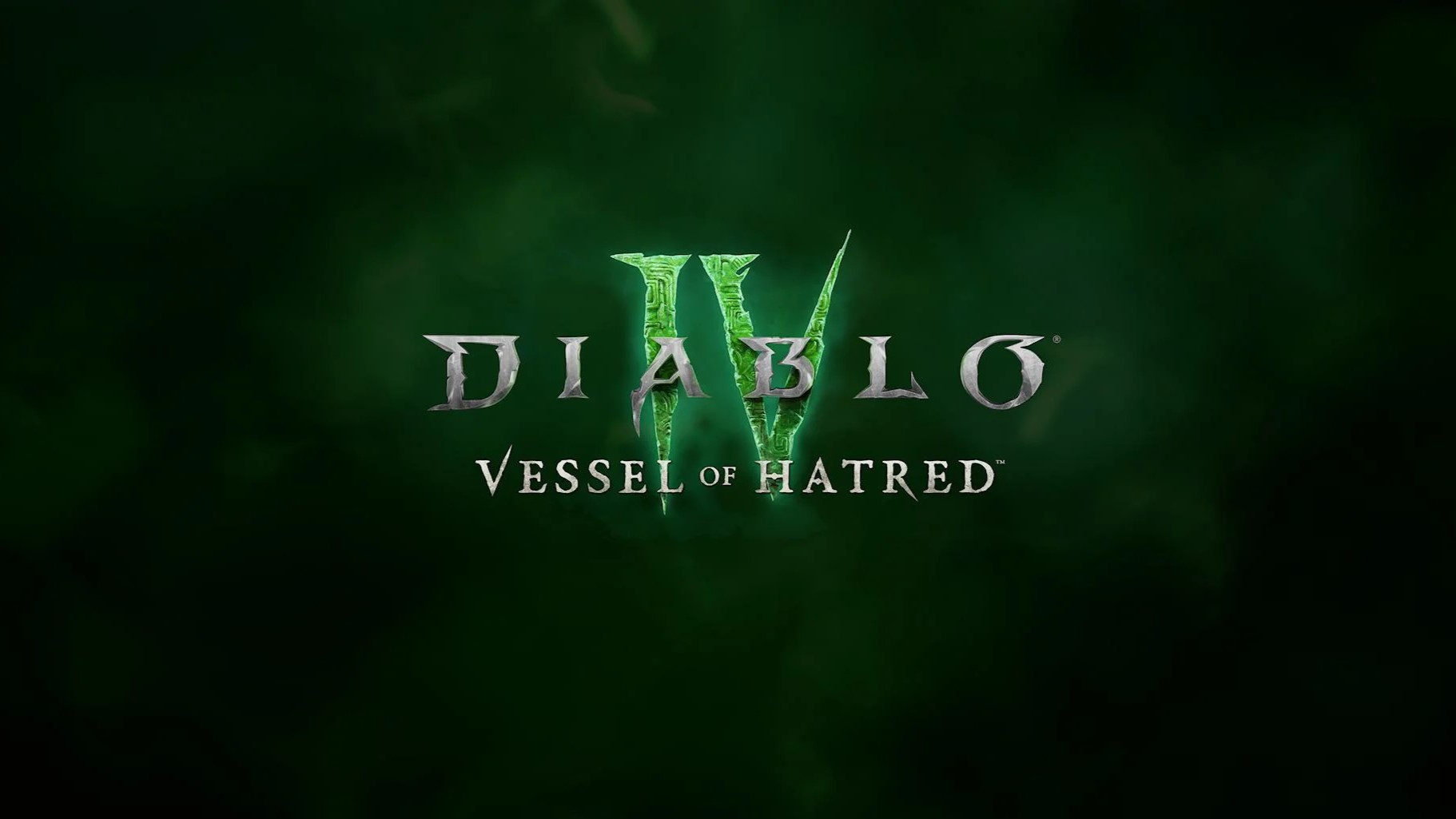
Launch date: October 8, 2024.
Platforms: Xbox Series X|S, PlayStation 5, Windows PC.
Features: New storyline, new Spiritborn class, endgame 4-player "raid" Citadel, time trial Kurast Undercity dungeon, new Nahantu zone, and more.
Multiplayer: 4-player online co-op, with optional PvP.
Game Pass: No (but base game, yes.)
Xbox Play Anywhere: No.
Price: $39.99 MSRP.
Diablo 4: Vessel of Hatred continues the story of Mephisto, whose demonic machinations led him to become trapped in a soul stone at the end of Diablo 4. Returning from the first game, the young scholar Neyrelle has charged herself with the destruction of the Prime Evil, but carrying such a forsaken burden weighs heavy upon her very being.
Diablo 4 has had a successful year, albeit controversial to some degree among core fans and fans of the genre. Some of Diablo 4's seasonal content drops have been spectacular and infectious, while others have been middling and disappointing. Vessel of Hatred brings with it a Season of Hatred Rising, alongside a new storyline, new character class, new endgame activities, and much more. But it's not cheap, clocking in at $39.99 — approaching the price of a fully-priced game.
Naturally, that price will also help keep the free live service afloat in the coming year, but so too does the expensive in-game store, as well as its seasonal battle passes. It was with that in mind that I dove into this review, knowing full well that the price of the thing has been a contentious point already. On paper, Diablo 4: Vessel of Hatred has a mountain of new content and features, but do they land as well as Diablo 3's Reaper of Souls did back in the day?
DEAL: Diablo 4: Vessel of Hatred | was $39.99 now $35.49 at CD Keys (XBOX)
Join us, as we head into the jungles of Nahantu.
This review was conducted primarily on an RTX 4080 PC with a code provided by Blizzard Entertainment, who did not see the contents of this review prior to posting. Testing was also conducted on the Steam Deck, Xbox Series X|S, and the Lenovo Legion Go.
Diablo 4: Vessel of Hatred review — Art direction
There's zero doubt in my mind that Blizzard Entertainment is at the very apex of art direction in the video game industry, and remains an example to be followed from every angle. Diablo 4: Vessel of Hatred very firmly continues this trend.
All the latest news, reviews, and guides for Windows and Xbox diehards.
Diablo 4 is impeccably well-optimized, running on lower-end devices like the Xbox Series S and Steam Deck like a dream. On higher-end devices like the Xbox Series X and my RTX 4080 PC, it showcases much more extravagance, complete with ray-traced lighting and all the graphical bells and whistles that you can throw at it. The new region of Nahantu is a great stage to demonstrate how far Blizzard has come when building photorealistic environments — all without compromising performance by way of some Sancturian dark magic, apparently. The lush, verdant forests ooze with life and pockets of seething corruption, all while maintaining the choking darkness of Diablo 2's iconic veneer.
Indeed, much of Vessel of Hatred takes place in Nahantu, which first appeared in Diablo II, alongside nostalgic settlements like Kurast and even the ruins of Travincal. The story runs you through various locations old-school players may find familiar, dotted with side quests that will send you deep into the jungle's most forbidden climbs.
Diablo 4: Vessel of Hatred has some sequences that left me aghast. Given the limitations of Diablo's isometric camera, it's a testament to the game's direction and production values that they're still able to deliver something that feels so immersive and striking. I don't want to spoil some of these moments, but you'll know them when you see them — it's not all violence for the sake of violence either, even if I personally appreciate a bit of the old gore in my games. Nahantu proves itself to be a varied platform for all types of spectacle, despite some early reservations I had that it might seem too similar to the jungle swamps of Hawezar to the north. Nahantu's canopies project a wholly different naturalistic vibe, all without sacrificing the gothic undertones that permeate the whole project.
Diablo 4's base game already had spectacular music, and Vessel of Hatred doesn't disappoint on that note either. One particular quest really felt like it was gunning for a Heart of Darkness vibe as you cut through thick vines to traverse deeper and deeper into the thick, monster-infested jungle murk. As you progress, the music ramps up to suit, culminating with a crescendo of eerie tones perfectly depicting the manifested malice of the Lord of Hatred, whom the game's story revolves around. It was just patently fantastic to experience, but I couldn't help being disappointed at how few these moments were compared to the base game.
Blizzard can clearly still deliver spectacularly magical set pieces that perfectly weave suitably disturbing visuals and haunting music, complete with high-quality digital acting and voice work. But the way the game's story paced made me wonder if episodic, annual releases will undermine and unravel the otherwise excellent audio-visual directing.
Diablo 4: Vessel of Hatred review — Story
It's always a little tough to "review" a game's story without resorting to spoilers, but there are really a few things you should know before heading into Vessel of Hatred — namely, that it sports an "episodic" structure.
In Diablo 4, players hunt down Lilith, the daughter of Mephisto, who is attempting to, in her own way, "save" the realm of Sanctuary where we, the players, live. To do this, she's attempting to absorb the power of her father, the Prime Evil Mephisto, although, as you might expect, players prevent this from happening at the end of Diablo 4. The consequence is that Mephisto, who was slumbering and recuperating after his "death" in Diablo 2, is essentially unleashed. Contained within a soul stone, the young scholar Neyrelle takes it upon herself to drag Mephisto's disembodied spirit through Sanctuary in a quest to find a more "permanent" means of death for the Prime Evil. It seems that generally, demons cannot be truly killed and can only either be contained or sent back to the Hells to recuperate. Lilith's plan was to break this cycle of war and peace for Sanctuary, although it would likely have led to a dystopic world where Lilith became some sort of tyrant queen. Lilith and Mephisto both try to manipulate the characters of the game as well as the player, claiming that it's only through allegiance with them that the next major war between Heaven and Hell, with Sanctuary as the battlefield, can be stopped.
Mephisto's containment in the crystalline soul stone is essentially a band aid solution. His corruption is so potent, that the presence of the soul stone itself is enough to corrupt the land and anyone nearby. In this case, namely Neyrelle. In the spectacular opening pre-rendered cinematic, we see Neyrelle plagued by twisted, horrific visions of her death as Mephisto seeks control of her mind.
Neyrelle asked players not to follow, but following our better judgement, we opt to ride to her aid. Along the way, the player makes new acquaintances in the Kejistan and Nahantu region, including the mercenary Raheir, and the enigmatic Spiritborn adherent Eru, who serves as our guide in Nahantu.
As I mentioned, it's difficult to go in-depth without spoiling, and I definitely don't want to do that. However, there were aspects of Diablo 4's story that left me with a dejected, disappointed aftertaste, mainly owing to its length. You'll manage to get through this $40 expansion in around 4-5 hours without what I'd consider to be a satisfactory resolution at the end, either. The story's jaw-dropping apex made me feel like I was hitting the mid-point of the story rather than its zenith. It was made all the worse when the characters of the story began undermining what I had just witnessed by essentially talking me through a banal tutorial of Diablo 4's new seasonal content.
It was an effective way to suck all the gravitas out of what I had just witnessed and experienced and served to undo the sense of awe that Blizzard's writing and art team had managed to instill in a relatively short space of time.
"Okay, you finished the story now... off you go to grind Helltides," with hints that the story will continue after you pony up another $40 next year, not including battle passes and the like.
I don't begrudge games need to be profitable to serve their corporate overlords, and I wouldn't prefer Diablo 4 to gun for a free-to-play model either. The quality of the production values speaks for itself. Every character class has fresh voiceovers for both male and female models, complete with photorealistic visuals and high-quality motion capture. I know that isn't cheap. But it's not about the price here to some degree. There's potentially more than enough content in the story, but it was poorly paced.
Somehow, Vessel of Hatred threads the needle of offering too much and not enough. Exciting and interesting new characters are barely given a chance to shine before they're cast aside, and new plot threads aren't given the attention they need to land well. New monsters, creatures, villains, and heroes emerge rapidly, but blink, and you'll miss it all — and be left struggling to remember what happened.
I think the story could've used some linear sequences, perhaps in unique dungeons or strongholds, to add meat to the bones of what is ultimately a fantastic new arc for Diablo 4. When Vessel of Hatred's story works, it works extremely well. The Diablo 4 team has been truly incredible at subverting expectations, and some plot twists here I absolutely never saw coming. It's honestly a testament to Diablo 4: Vessel of Hatred's quality that I was left wanting more. I was never bored, and I was utterly intrigued and invested by what was on offer. But I was also like, "wait, that's it?" at the end, which makes the case for its $40 price point difficult to parse by itself. And, of course, there's much more to Vessel of Hatred than its story, but we've yet to fully dig through everything that's on offer as we progress our review further.
I found myself thinking back to the Reaper of Souls days from Diablo 3, which told a very much more contained story but also spent a much longer time in development. I don't think you can really deliver a villain as worryingly charismatic as Mephisto in a single mini-expansion like this, so I was expecting at least some episodicity (yes, I made up a word). But I think more attention perhaps should've been paid to how the story would play out and align it more deeply with expectations. Is an annualized $40 expansion going to work for Diablo 4's story? It may well end up doing so. It's frustrating that we'll have to wait even longer to answer that question.
Diablo 4: Vessel of Hatred review — Gameplay
And here's where we hit the "in progress" portion of the review. A lot of Diablo 4: Vessel of Hatred is ultimately tucked away behind dozens of hours of endgame play, which is where the vast majority of players will end up. I didn't have a suitable amount of time to get to that point, coupled with the fact the new Citadel "raid" dungeon is tuned for 4-player groups. To that end, this section is largely about some of the new features you'll experience as you level up toward that endgame bracket, and thankfully, a lot of it is really good.
The headline act here is the Spiritborn class, which is essentially Diablo 4's take on the classic Monk class. Spiritborn players fight with martial arts, summoning the spirits of powerful jungle entities to augment their abilities.
For most of my playthrough, I leveraged centipede abilities simply because I've never really seen anything like it in a game. The centipede's ultimate ability is a true spectacle, causing a writhing insectoid horror to erupt from the ground in a poison-spewing volcano, blasting enemies with a fetid Dragon Ball Z laser beam. You can also summon the powers of a gorilla, which orients around tanking and strength, as well as a powerful hawk form with a focus on agility. Finally, we have the jaguar, which revolves around rapid close-range attacks.
When you strike in melee, you teleport forward a little to meet your foes where they are, it gives the Spiritborn an impressive amount of agility, and allows you to move out of harms way too if you're clever with it. There seem to be mountains of build potential here, too, given that you can adopt alternative spirits and essentially wield multiple powers at once. I went all in on centipede abilities, but I can see builds emerge that synergize well by mixing it up. When you equip the gorilla passive, for example, it enables all centipede abilities to also count as gorilla abilities. It'll be interesting to see how the min-maxxers approach Spiritborn in the coming weeks.
The other major feature you'll engage with while leveling is the Mercenaries system. This is similar to features from previous Diablo games, allowing you to enlist the help of a team of mercenaries you'll meet through side quests and the main quest in Vessel of Hatred. They effectively function like necromancer minions, attacking mobs automatically at will, although they have mini talent trees to customize their abilities, which can also provide some synergies for certain builds and affixes.
My biggest issue with these mercenaries is that they generally lack personality beyond their initial unlock quest, although it's more of a story issue than gameplay potential. Once you unlock them, there's very little additional information about them. They rarely have anything unique to say and become far more mechanical than I would have expected. It's essentially like giving every player a necromancer Golem who is just as chatty. Once you've set them up, you'll forget they exist — you won't see them in the scrum of enemies on screen. It's a shame because I really wanted to know more about the strange, cursed kid Aldkin and the cannibal berserker Varyana, but alas, it was not to be. At the very least, they will offer some solid additional considerations for making custom builds, and there's always potential that Blizzard could flesh them out a bit more later on.
Another aspect of Diablo 4 that should boost playstyle customization is the new runes system, which tentatively, I found quite fun and interesting. I am by no means a theory crafter, but even from a simplistic level, I was able to create combinations that would supplement my build. I wanted more ultimate casts for my lovely centipede bro, so I built a rune combination that would decrease the ultimate cooldown every time I dodged. It's plain to see how much these runes could feed Diablo 4's already vast build customization system, at least for those who like to go off-meta.
At the time of writing this part, we still hadn't seen how Diablo 4's endgame would flow, but there are plenty of new things to try out if you don't want the full-blown breakdown we've just added below.
One of the new features is the Kurast Undercity, which is a time-trial dungeon that offers increasingly powerful rewards based on your performance. As a World of Warcraft player, I admit it gave me some bad memories of Blizzard's Torghast experiment, which was similar in functionality. However, I feel like it works infinitely better in Diablo 4, which has more rapid combat loops in general. Whether or not it'll start feeling like a chore remains to be seen, but exploring the depths of the Undercity is just one way that players can earn loot and prestige in the new expansion.
There's also the new Citadel, which is controversially tuned for 4-player groups. Diablo's experiment with more "MMO"-like activities hasn't gone over well with some players, who prefer to experience the game solo. If I had to drop a prediction, I could see Blizzard relenting on the Citadel's forced multi-player requirement or allowing you to play with AI companions instead, similarly to how World of Warcraft has begun approaching group content. During a developer Q&A session, Diablo 4 lead designer Rex Dickson explained that creating a solo version would require a "major redesign." Developing viable AI partners for all the custom mechanics would require significant investment in components not used elsewhere in the game, he explained. However, if others pick up on this issue, it's likely that demands for soloable versions will grow louder. We've seen Blizzard relent in response to player feedback before.
It's perhaps ironic that World of Warcraft is offering players more ways to play solo while Diablo IV is taking them away. As someone who does have a group of Diablo-bros to play with, I'm looking forward to trying it out, but I understand the frustrations of those who prefer to play solo.
Beyond that, there's a range of new difficulties, bosses, and seasonal activities to look forward to, detailed in the recent Diablo 4 Season of Hatred Rising stream. And now we've absorbed everything the endgame has to offer, I'm back with an update to present our more detailed endgame overview below, penned by our hardcore Diablo expert Jennifer Young.
Diablo 4: Vessel of Hatred review — Endgame
Our initial hesitancy to rate the expansion before experiencing the endgame in full, turned out to be justified. A massive chunk of the Diablo experience is all about what happens after hitting level 60 and stepping into the wild world of Torment difficulty. Now that we've had a few days to properly dive in, we've officially hit endgame, breezing through Torment 3 with a Spiritborn build so absurdly fun, it's basically begging to be nerfed in the next patch. Sure, doing zoomies through Nahantu with my Spiritborn is a blast, but it doesn’t fully mask the glaring issues that crop up once you’re done with the story.
Vessel of Hatred introduces two new endgame activities: the Kurast Undercity and the Dark Citadel. Let’s start with Kurast Undercity. The goal? Hit max ‘attunement’ while running through a three-floor dungeon, beating the clock by slaying demons conveniently marked with timer icons. When the timer runs out, or you hit attunement level 4, it’s time to face the district boss. It’s a visually stunning fight, but unfortunately, the loot at the end is about as exciting as stale bread. Despite multiple attempts, I wasn’t able to complete the ‘Priority Quest,’ which told me to ‘beat Alia,’ the district boss. After much frustration and searching Reddit for solution it seemed this was due to a bug that meant if I didn’t get the final hit on this boss whilst in a group, it wouldn’t count for me. Following a solo completion, I was ready to jump into the activity with gusto but on each subsequent side quest was met with bugs and crashes. Nothing worked first time. Now I finally have the Kurast Undercity fully unlocked, it still doesn’t seem to matter if I reach attunement level 1 or 4, if I offer a ‘tribute’ or not to increase my rewards. The rewards are lacklustre either way. It has promise but I’m sure isn’t currently working as intended.
As for the Dark Citadel, it’s a 2-4 player co-op dungeon, but again both me and my group were met with bugs in our attempts to unlock it. The Priority Quest that’s supposed to lead us there? Yep, you guessed it—bugged. When we did finally unlock, it’s actually a refreshing change of pace in the gameplay, with puzzles to complete as a group. The journey to actually access it somewhat soured my experience, but I do look forward to experimenting more with the weekly challenges. The bugs aren’t limited to just these endgame events. Ever since patch 2.0.2, I’ve been running into all sorts of problems, even while just trying to complete base content. As a completionist, not being able to unlock all the Tenets of Akarat (Vessel’s version of the Altar of Lilith) is driving me nuts. If another player activates one before I do, I’m locked out from completing it myself. Add to that NPCs like Neyrelle getting stuck on terrain during story quests, and I’ve had to restart my game more times than I care to admit.
Season 6 is also, I hate to say it, a bit of a dud. The Season of Hatred Rising directs you to go and hunt down Realmwalkers —massive enemies immune to your attacks that you have to chase across the map as they slowly, painfully slowly, spew out enemies. Eventually, they stop, become vulnerable, and you can finally whack them. After that, they drop a portal to a Seething Realm, which, to be fair, is a somewhat redeeming feature. You get to dive into loot-filled ruptures and even control the type of reward you’ll get. But getting to this point feels more like a chore than a challenge. And that’s it—that’s all Season 6 has to offer, along with a Reputation board for rewards. The board also completes at a snails pace compared to previous seasons, leading me to believe it’s also not working as intended. Blizzard have also removed the incentive of a Resplendant Spark (a crafting item for Mythic Uniques) upon completion, and consequently my enthusiasm to bother completing it. If you’re playing the season without purchasing the expansion, don’t expect much; it’s slim pickings.
Blizzard’s promised fixes for all of these issues and says they’re taking feedback on Season 6 activities, but right now, it feels like all the polish went into the shiny new Spiritborn class and not the endgame that returning hardcore players were always going to grind through. Despite playing long after finishing my Season activities in Season 4 and 5, I can’t say I’ll be doing the same with this Season, which isn’t ideal given Vessel of Hatred was supposed to be another new era for Diablo 4 with all of this new content to enjoy. With so many huge titles dropping this month—Dragon Age: The Veilguard and Call of Duty: Black Ops 6, just to name a couple—the ‘fix it later’ approach just doesn’t cut it, and certainly not when $40 is on the line.
Diablo 4: Vessel of Hatred review — Is it worth it?
In this Diablo 4: Vessel of Hatred final review, we ultimately glimpse what Blizzard's long-term plan is for the game. Vessel of Hatred has dropped relatively quickly after the game's base launch, which is fairly impressive in of itself, but I'm left wondering if it was too fast. The game's story pacing undoubtedly trips itself up in places, leaving some characters feeling wasted and some story beats feeling undermined, but there are plenty of players who are more interested in how Diablo 4: Vessel of Hatred will feel deeper into its endgame.
It didn't exactly fill me with confidence that I was playing something new and shiny when the main story quest sent me to start grinding Helltides again. One of the "new" dungeons it sent me to had that familiar Horadric vault layout, complete with the event with the Scottish lass, "you there!" she cried, again, asking for help, again. Just how much is actually new here? New rewards await with a new battle pass, Season of Hatred Rising, multiplayer Citadel raid, and more, but it has been interesting watching the wider audience's reaction to the expansion's overall value, and its polish issues.
You should buy Diablo IV: Vessel of Hatred if:
- You love the base game already.
- You've been waiting a while for the return of the Monk-style class.
- The idea of group-oriented "raid" content is interesting to you.
You should skip Diablo IV: Vessel of Hatred if:
- You're not very invested in the story and don't enjoy what the base endgame offers since there are no revolutionary changes here.
- You don't like Diablo 4's "seasonal" character progress structure.
- You find $40 to be a bit pricy for what amounts to 4-5 hours of story content and have no intentions to play in the endgame.
Diablo 4 is my "comfort food" game, which I play in between big releases. I suspect it's like that for a lot of people, too. One thing I often hear from people who don't want to play Diablo is that they don't like the fact the characters can't progress beyond a season. And indeed, there's nothing in Vessel of Hatred that I would exactly describe as revolutionary for new players. It's an expansion designed wholly for the existing player base, but I think even Diablo diehards may find the story delivery here a little anemic when it's all said and done.
The success of Vessel of Hatred is probably already written in stone. The game has already done incredibly well for Blizzard and Microsoft, generating tens of millions, according to some reports, despite a rocky initial start to its live service. As we dive deeper into the endgame, similar to Neyrelle's plight, we're discovering more and more bugs that mire the experience. I'm left with the bittersweet aftertaste of the story's spectacular highs and disappointing brevity. The foundation is incredibly strong, though. It's undeniable that the team has built a powerful stage upon which to further flesh out the Mephisto arc, I just hope that the team will continue to listen to feedback. So far, they've done a decent job on that front.
So, even if we're a little disappointed here, there's still reason to be optimistic about what is yet to come for Diablo IV.
Diablo 4: Vessel of Hatred | was $39.99 now $35.49 at CD Keys (XBOX)
Diablo 4: Vessel of Hatred requires the base game Diablo 4, and comes with a whole new region, new story arc, new endgame content, and more. The basic edition is $49.99 MSRP, but CDKeys has it up for a bit cheaper as of writing. It also has a launch "sale" for $39.99 at the Microsoft Store and Xbox Store.
Deluxe Edition | was $59.99 now $53.29
Ultimate Edition | was $89.99 now $79.09

Jez Corden is the Executive Editor at Windows Central, focusing primarily on all things Xbox and gaming. Jez is known for breaking exclusive news and analysis as relates to the Microsoft ecosystem while being powered by tea. Follow on Twitter (X) and tune in to the XB2 Podcast, all about, you guessed it, Xbox!
- Jennifer YoungContributor, Gaming
